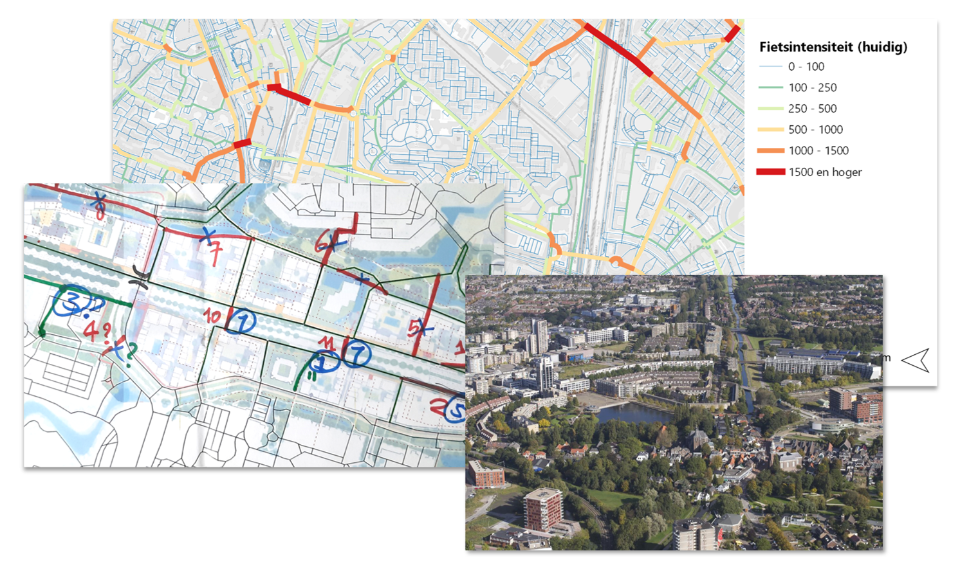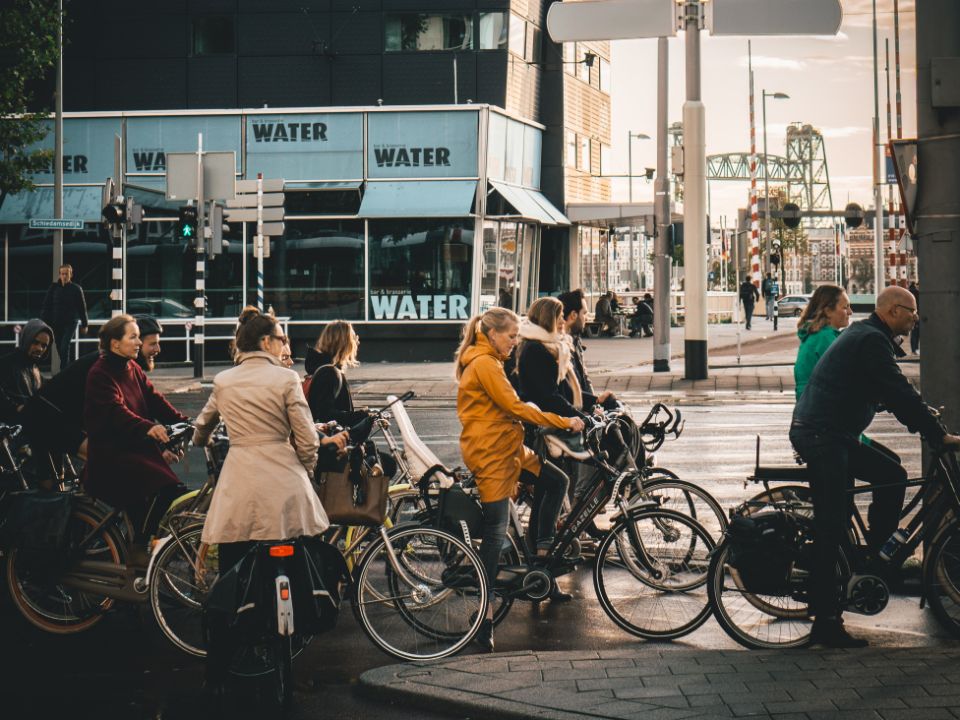Bicycle Traffic Monitor used for validation of structural design for Entree Zoetermeer

The Entree is a development area in Zoetermeer. This former office park is being transformed into an attractive residential area with good connections to the city and public transport. In this redevelopment, the municipality wants to encourage the use of bicycles. Therefore, the design team needed to have an early insight into the question: 'what is the impact of the design variants on future bicycle traffic?
How to optimise the bicycle network around a town?
First of all, the ambitions of the municipality were drawn up in the structural design. This describes how the current bicycle network will be expanded. A sounding board group has been set up that uses personal experience from the neighbourhood and the town to discuss matters with the designers and the project team. In this way, the municipality ensures a participatory and validated final design.
The Bicycle Traffic Monitor predicts future bicycle flows
For this project, the Bicycle Traffic Monitor has been used. First, the current bicycle network is mapped by linking various data sources. The Bicycle Traffic Monitor visualises the current intensities in the network on a map. Next, the planned bicycle infrastructure from the structural design was added and future bicycle intensities were calculated and visualised. Housing, shops, schools, bus stops, offices and other bicycle destinations have also been included in the calculations. As the structural design contains a lot of information, it is possible to make a detailed calculation and forecast using the Bicycle Traffic Monitor.

Evaluation of the structural design with the Bicycle Traffic Monitor and the sounding board group
Both the information from the Bicycle Traffic Monitor and the validation from the focus group were used to evaluate and, where possible, optimise the design. Several bicycle connections, for instance, turned out to have a major positive effect on bicycle use. An overall picture emerges of possible missing links. It was striking that the bike path along a major road would attract a problematic amount of bicycle traffic and some connections would become quite busy. This could have a negative effect on the cycling experience. Subsequently, the Bicycle Traffic Monitor team entered into discussion with the sounding board group, inviting them to sketch out new variants and scenarios that would serve cyclists even better.
Defining, calculating and analysing four variants
In consultation with the sounding board group, four alternatives were defined and subsequently calculated with the Bicycle Traffic Monitor. The variants were:
- Adding two bicycle crossings over a motorway with a large barrier effect between the eastern and western part of the plan area.
- Adding a more direct cycle connection to Zoetermeer railway station.
- The bicycle network during construction: the scenario that all functions in the plan area have been realised but not all bicycle infrastructure is in place yet. The time factor is therefore included here.
- An extra bicycle crossing between the southern and eastern plan area.

Effects of the variants shown in the Bicycle Traffic Monitor
All variants have been calculated in the Bicycle Traffic Monitor. This provided insight into how the design of cycling infrastructure could be further optimised from a bicycle perspective. Together with the focus group, the team was able to discuss the results at a detailed level. Because the visualisations and effects were presented in a clear and user-friendly way and it was possible to zoom in on the subareas, the group had a clear idea and feeling for the effects of their variants.
New version of structural design with more eye for cyclists
The redevelopment project team incorporated the evaluation of both the structural design and the various variants in the design. Houses, offices, facilities and other matters that have an impact on bicycle traffic have also been included in this design. All this forms important input during the next design phase of the project and has already resulted in a number of bicycle routes being adjusted based on the results of the Bicycle Traffic Monitor. This will certainly contribute to the goal of stimulating bicycle use.
Read more about the Bicycle Traffic Monitor
The Bicycle Traffic Monitor helps use data to map out bicycle traffic, identify bottlenecks and determine the impact of measures.



